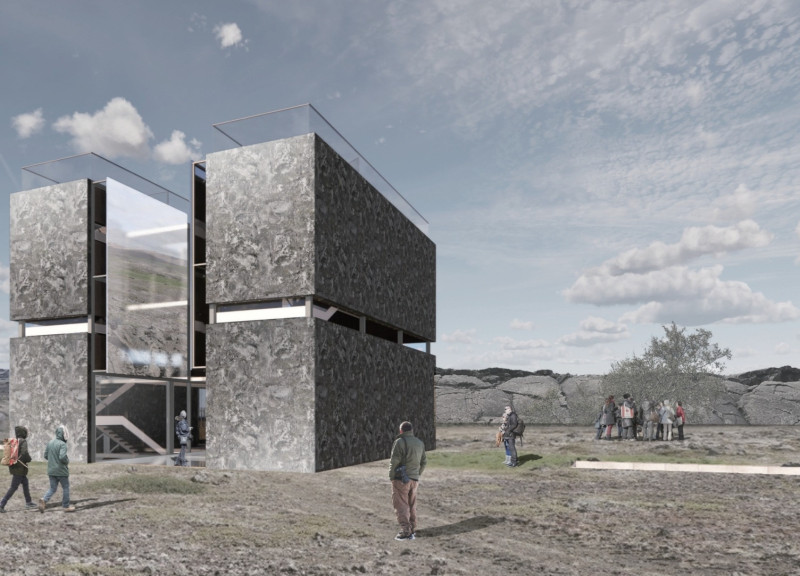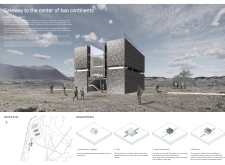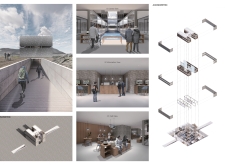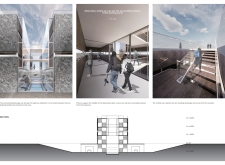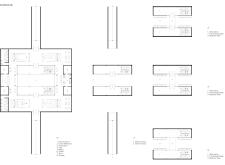5 key facts about this project
Design Representation and Functionality
The Iceland Cave Tower symbolizes the intersection of architecture and geology, providing a framework for engagement with the natural environment. The primary function of the project includes facilitating tourism through observation decks, information centers, and community spaces. These areas are strategically designed to accommodate varying levels of visitor engagement, encouraging exploration and learning about the geological context of the surrounding areas, such as the Grjótagjá cave.
Structural elements comprise a blend of concrete, glass, local stone, and wood, each chosen for their functionality and synergy with the site’s natural characteristics. The use of concrete provides a robust structural foundation, while glass components maximize visibility and natural light within the building. The incorporation of local stone reinforces the connection with the geology of Iceland. Interior spaces are designed to be inviting and reflective of the site, extending the architectural experience beyond mere observation.
Unique Design Approaches
A notable aspect of the Iceland Cave Tower is its integration with the existing landscape. The design employs a vertical form that directs movement and views, enhancing the visitor's interaction with the geological features. This approach aligns the aesthetics of the building with the surrounding environment, ensuring that the structure complements rather than dominates the landscape.
Reflective surfaces are featured prominently in the design, serving both a functional and artistic purpose. These surfaces enhance visibility and foster a visual dialogue with the sky and surrounding terrain. The pathways leading to the observation areas are intentionally aligned with the geological topography, further emphasizing the relationship between the architecture and the site.
Visitor Experience and Engagement
The interior layout includes observation decks at varying heights, allowing visitors to appreciate the expansive vistas. Each deck is connected through thoughtfully designed staircases that encourage a journey of exploration. The building is not just a physical structure; it represents an immersive experience that educates visitors about the geological significance and cultural history of Iceland.
Architectural plans and sections showcase the careful consideration applied to spatial relationships within the tower. The structural design is a reflection of detailed planning, ensuring accessibility and comfort throughout. The architectural execution prioritizes sustainability by utilizing local materials and aligning the design with the natural landscape.
To gain a deeper understanding of the Iceland Cave Tower and its architectural intricacies, interested readers are encouraged to explore the project's architectural plans, sections, and designs for a more comprehensive insight into this innovative approach in architecture.


